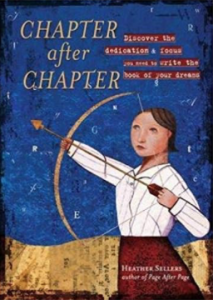In March of 2014 I began doing something I’d only tried once before–to write a novel. I spent several months buying up whatever book I could find that offered advice on how to write the perfect novel.
It was not until July that year that a successfully published author who was actually a client of mine told me about The Writer’s Path program at SMU run by J. Suzanne Frank.
Since August of 2014, I have been enrolled in the program having worked my way through Story, Plot, Heroic Chapters, and Chapters. Revision is not far ahead.
All the books I bought until I got into the SMU program were not anywhere as helpful or as insightful as the SMU program itself. There are several amazing already published authors who teach the program–from Suzanne, who I have dubbed “The Jedi Writing Master” to Keith Goodnight, Amanda Arista, and Kay Honeyman to name just a few. Each of them has taught me things about writing I did not know from having written so much the past 40-plus years of my life and I am forever grateful to all four of them.
The program’s foundation is centered on Christopher Vogler’s The Writers Journey. Complimenting it is a book by Eric Edson–The Story Solution. And in a pre-revision class Suzanne was teaching in March there’s a new amazing book to use–Shawn Coyne’s The Story Grid. If you do not live in Dallas and cannot enroll in the program, spending hours, days and weeks in these three tools will help improve your storytelling in ways you will not believe.
To date, I have written three full-length novels.
The first one, The Privacy Patriots, is about a reporter who is given Edward Snowden-like information about the forthcoming launch of the world’s first fully-functioning quantum computer. When Kip Rippin writes about it in The Washington Broadcaster, China, Russia, Iran and North Korea–known as CRINK in the book–go nuts because they can see the computer, code named IBIKTUS–(I can’t tell you what that stands for–it’s Classified)–is nothing but a first-strike weapon. It’s the Red October of computing, designed for one purpose–the get into the computer networks of any on the planet–in a millisecond–or the flash of a few quibets. Cyber Winter ensues. That’s my word. It’s not in Google, yet. But just as there would be a nuclear winter after a nuclear attack, there would be a cyber winter, after the attack described in the book. Kip has paired up with Maycee Vincent, who works for a Menlo Park cyber honey potting group that tracks online viruses worldwide. Getting the lights back on in America–as well as utilities, banking and anything else that’s hooked up to a computing network–becomes the unofficial mission of the two, who are being chased by the government as well as terrorists in America who want information about IBIKTUS. It is a thriller and about 93,000 words in length.
The second book, The Voodoo Hill Explorer Club, is about Kirk Carson, a thirteen-year-old boy who creates a tree house club with three of his best friends on what was K.I. Sawyer Air Force Base near Marquette, Michigan in 1977 after he has been dumped by his girlfriend, Sadie, for another guy.
The third book, First Things and Final… gets its title from a line in the Old English poem Sir Gawain and the Green Knight: “First things and final conform but seldom.” It is the story about Sterling James, who was a poor country girl growing up in Chilton County, Alabama, and married Harvey, knowing he was gay, but rich enough to elevate her into the social status of Montgomery necessary for her to be a part of the elegant ball system that continues to this day. The book begins with Sterling stuck in a bathroom stall at the ball when her monthly bill comes due and her arch rival, Annabelle Fitzpatrick, comes in with her toady Meredith Head-Alexander and is talking about proving Harvey is indeed gay–not knowing Sterling is in the last stall listening to every word. In that conversation, Annabelle also insists she will be bedding down Kent Jackson, a novelist from Los Angeles who is near defaulting on a second book contract and has come to Montgomery to write a book while living in a home around the corner from the F. Scott and Zelda Fitzgerald Museum–one of only four houses the Fitzgeralds lived in. (Zelda Sayre Fitzgerald was the belle of a ball in Montgomery in the early 1920s, before she met F. Scott.) In the book, Kent walks over to the museum at night to sit on the front porch and try to capture the feelings the master writer might have felt while sitting there while Zelda was living there with him, or after she returned to the East. To keep Annabelle from her prize, Sterling intervenes and finds herself embroiled in an adulterous relationship with Kent–putting her at odds with Harvey, Annabelle and her morals. The book, 94,000 words in length, paints a picture of the modern South, where thousands of dollars a year are still spent on glamorous dancing balls, adultery is still practiced but not condoned, and Bibles are still thumped loudly on Sunday mornings and Wednesday nights. Colorful, passionate and full of Southern pageantry, the book asks the question of whether we ever get unstuck from the stuckness of our lives, and if we do, can we stay free or do we retreat back to where we know the street names of our own Hell?
I could not have written these three books without the guidance and direction of my mentors at SMU. I just could not.






0 Comments